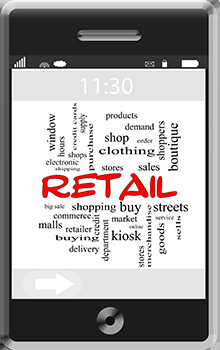Do shops need to worry about the e- intelligent customer in the era of e- commerce?
The age of internet has brought about a significant change in the purchasing attitude of customers. The buying point has shifted from a brick and mortar shop to anywhere; people search, compare and purchase anything, anytime over the internet. In the coming years buying on the Internet will increase even more, to approximately 50- 60% of the non- daily shopping. Transparency regarding products on offer gained by just a quick look on the Internet puts a great deal of pressure on shop prices and margins, and therefore on the profitability of shops. Going to the shops has become a choice, not a necessity.
New generation and business shops have of course responded to this. Shopping malls have been developed that provide recreational activities, an experience for visitors, restaurants and bars, as well as free parking facilities. But this has contributed to the ever increasing number of empty shop premises in the city centers. Longer opening hours was the response to the customers’ wish to be able to shop in the evenings and over the weekends, but this has simply led to shopping expenditure being spread out over the available hours rather than leading to more purchases. All sorts of product promotions were introduced, from recreational events to price promotions, from loyalty programs to free home deliveries. Competing with the Internet, however, is increasingly proving to be very difficult. Shops have to think carefully once again about the customers’ future purchasing attitude granularly and how to respond to this. Shops remain to be an important facet of the quality of life in a city or town. A town without shops is dead, and no one wants to live like this. However, as the buying capacity of customers has dramatically changed, shops too will have to change radically.
Simply changing the existing (shop) systems is not sufficient. Not enough would change to attract customers to a shop and motivate them into making purchases. Shops have to respond to what the future brings, by integrating technology and responding to the wishes of customers. In addition, shop locations need to be changed; if the customer does not go to the shops, then the shops will have to come to the customer.
This involves the typical three tier varieties of shops- local shops for daily needs, high streets and city centers for recreational shopping, and social shopping in the out- of- town shopping centers for goal- oriented buying. For each cluster a separate strategy will have to be developed in order to attract customers. Shopping will have to become a conscious choice for customers once again, otherwise they might just disappear for good in many places, with the Internet held as the major culprit!

Anup Das (mailto: [email protected]) manages ERP and CRM projects at Happiest Minds. Anup’s primary areas of expertise include Predictive analytics and IT service delivery; with deep exposure across Finance, Retail and energy Industries. Anup holds a Master in electronics degree from University of Jabalpur.





